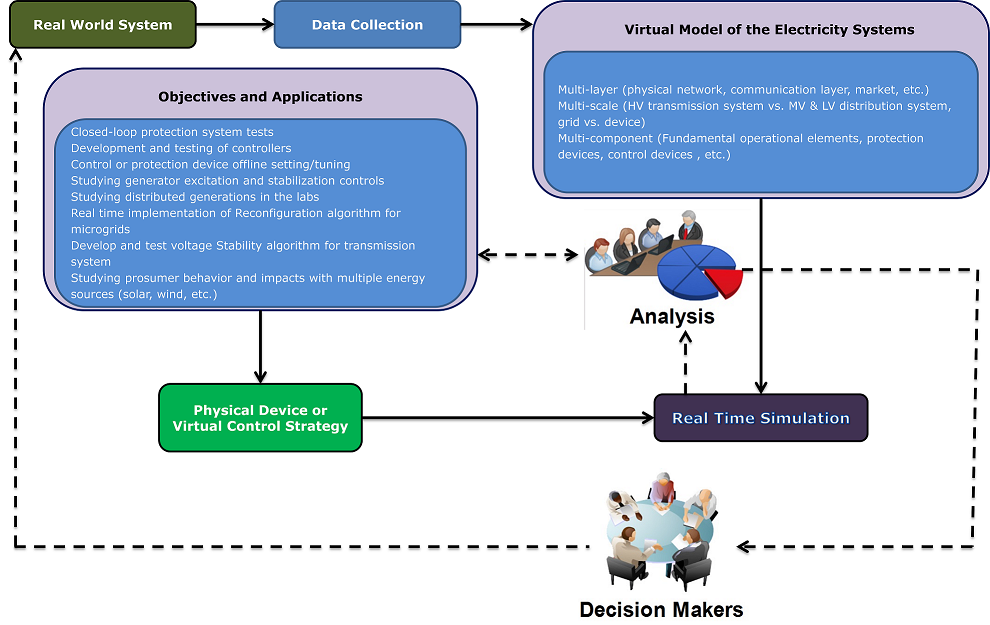Real Time Simulation
Real time simulation is reproducing the behavior of a physical system through running its computer-based model at the same rate as actual wall clock time. In other words, in real time simulation, when the simulation clock reaches a certain time, the same amount of time has passed in the real world. For example, if a process takes 1 second to finish in the real world, the simulation would take 1 second as well. Real time simulation is typically used for high-speed simulations, closed-loop testing of protection and control equipment, and generally all “What-if” analyses. Real time simulation is actually simulating a system, which could realistically respond to its environment, when the inputs/outputs of the simulation are synchronous with the real world.
There are a lot of different types of simulation tools for modelling and planning for power systems, from large-scale high voltage transmission systems to low voltage distribution grids or even small controllers or devices, for a variety of applications, from transient analysis to long-term planning. Nowadays in power systems, renewable energy sources as distributed generations are penetrating increasingly, more smart equipment, like smart metering infrastructures, are being utilized, the infrastructures are also growing in terms of complexity and interdependency, and the communication system used for information flow are also being extensively developed as well as operational methods. Therefore development of advanced management systems, either equipment or strategies, is vital for power networks.
However the deployment of new systems requires tests and validations before implementation: new equipment models should be tested before making any prototypes, or the physical prototypes should be replaced with virtual models in advance, and tested in a virtual environment or network model. This requires power network simulation as close as possible to the real world. New strategies (e.g. fault location algorithms, demand side management, etc.) should be also verified before applying them to the real world. To meet all these requirements, real time simulation of power systems seems inevitable. Real time simulation provides a virtual environment of the systems in which new control strategies or technologies can be tested ex-ante before implementing in the real world system providing trustable real-like information on impacts and benefits.
The figure below illustrates an example of a real time simulation-based decision support system for electrical systems in a very general level. Data and models from the real world are fed into a real time simulation by which a variety of tests and studies are performed to finally analyze the benefits gained from new technologies or control strategies. From the results of such analysis, decision makers would implement the new schemes or devices to the real system for design, improvement or reinforcement. As an example, from the virtual model, through fast simulation, a forecasting tool like load forecast algorithms would generate some sort of state transitions (e.g. load profiles for a distribution system representing consumer behavior) as scenarios to be studied. Then automated or interactive analysis real time tools would simulate system behavior with respect to the scenarios and system model.

